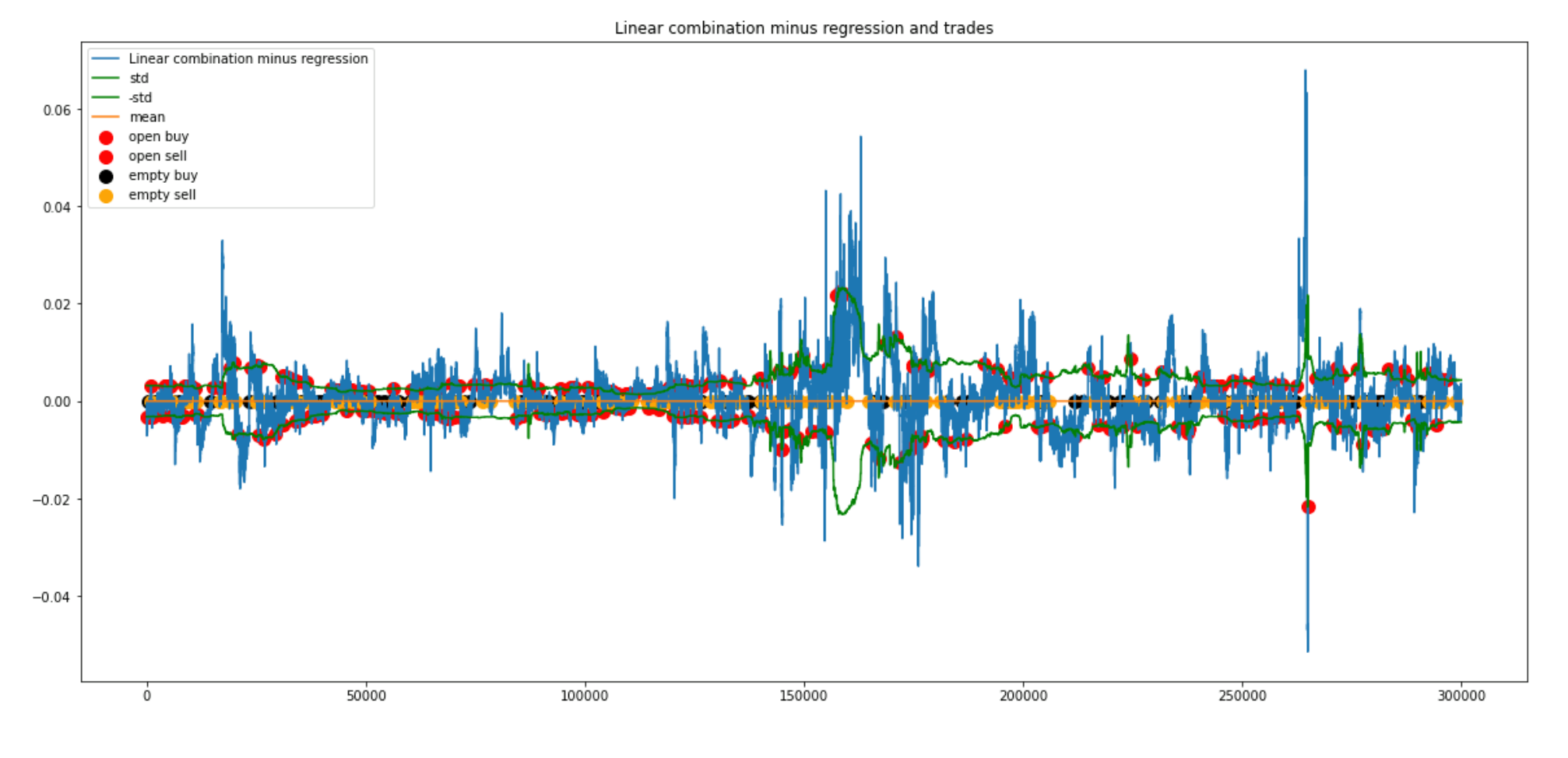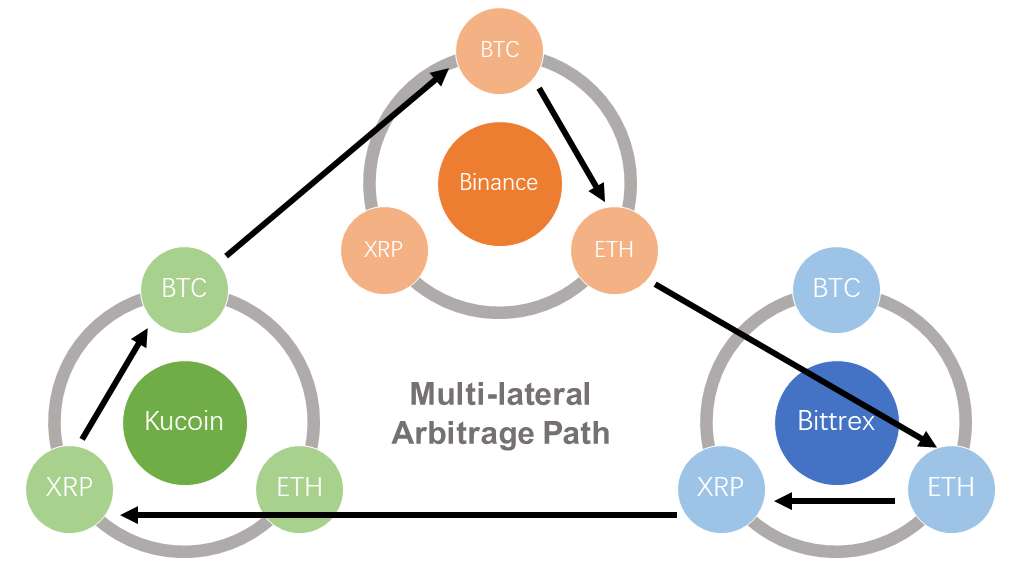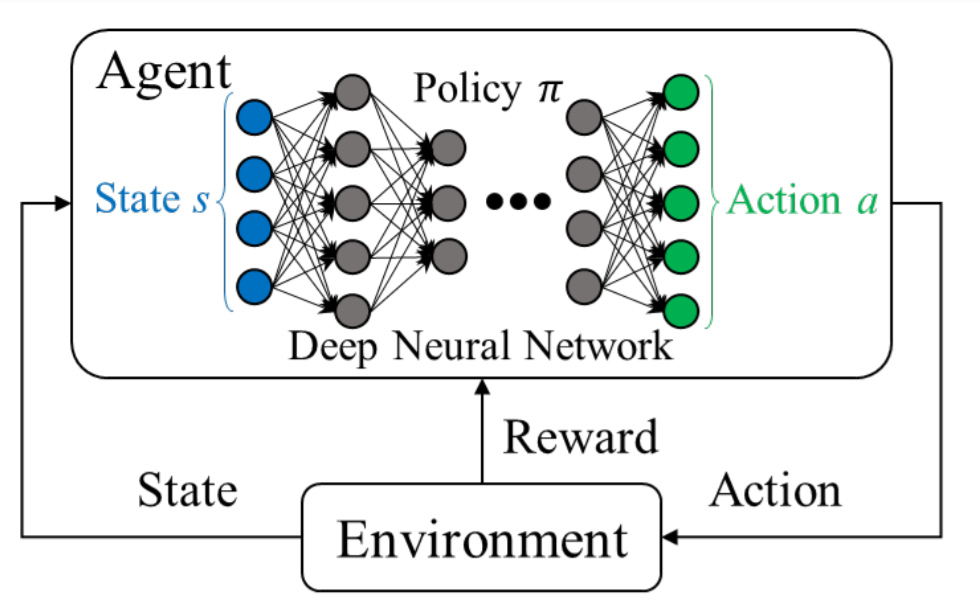Strategies overview
Cointegration statistical arbitrage
Cointegration is a statistical property of a collection (X1, X2, …, Xk) of time series variables. Formally, if (X,Y,Z) are each non stationary, and there exist coefficients a,b,c such that aX + bY + cZ is stationary, then X, Y, and Z are said to be cointegrated. Thus, under the assumption that a given linear combination of price time series is stationary, a deviation from zero is expected to reverse to the mean shortyy. This allows for statistical arbitrage between different set of cryptocurrencies, where a trade is opened when a deviation of the linear combination of at least one standard deviation form the mean is observed, and closed when the mean is reached. We continuously look for sets of cointegrated currencies and update them on a regular basis.


Wave pattern analysis
In 1938, Ralph Nelson Elliott publish his wave theory of market behavior, which posits that collective investor psychology, or crowd psychology, moves between optimism and pessimism in repeating sequences of intensity and time period. These mood swings then create patterns evidenced in the price movements of markets at every degree of trend or time scale. In our strategy, we extend the ideas and analysis of Elliot in a more quantitative and general manner. Wave patterns are algorithmically identified with signal processing methods, and statistical properties of waves are assessed to leverage useful information for trading decisions.
Volatility option arbitrage
Volatility arbitrage takes advantage of differences between the current and the future volatility of an option. In contrast to the price, the volatility is used as the unit of relative measure, i.e. our strategy attempt to buy volatility when it is low and sell volatility when it is high (and vice versa). The arbitrage is based on the fact that the price of an option changes with volatility, by hedging an option position against its underlying asset, we are able to profit from predictable changes in volatility. We forecast volatility mainly from social media activity and volatility pattern analysis. As an example, a long period with low volatility indicates a potential incoming strong movement.


Cross-blockchain currency arbitrage
Cross currency arbitrage exploits market imperfections resulting from a pricing discrepancy among three different currencies on the market. While such arbitrage are nearly impossible to execute across regular exchanges due the high competition, the execution speed and funds required. There are more opportunities for arbitrage directly on the blockchain with the combination of decentralized automated market makers (Uniswap) and flashloan (Aave). Also, smaller and newer chains (Avalanche, Solana, Polygon, ..) are less exploited and arbitrage opportunities across these chains are easier to execute. We leverage the recently implemented crosschain liquidity protocols (Thorchain, Route) to perform arbitrage directly across less established chains and sidechains.
Trading with a deep reinforcement learning agent
Financial Trading can be formalized as a game with imperfect information, in which the goal is to maximize profit and minimize risk. As recent advances in Deep Reinforcement Learning (DRL) agents have been successful in tackling very challenging game environment such as Go, Atari, Starcraft II and Dota II. DRL also provides a framework toward end-to-end training of automated profitable trading agent, which can decide what to trade, at what price, and what quantity in a fully automated manner. In our strategy, we use a state-of-the-art deep recurrent Q-network (DRQN) to continuously learn from the market and adjust trading decisions to the most recent data accordingly.
